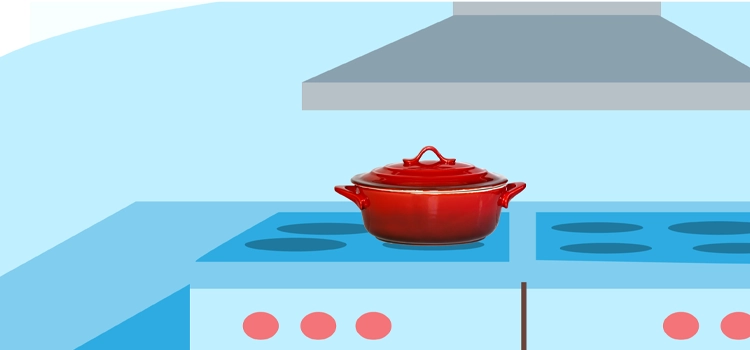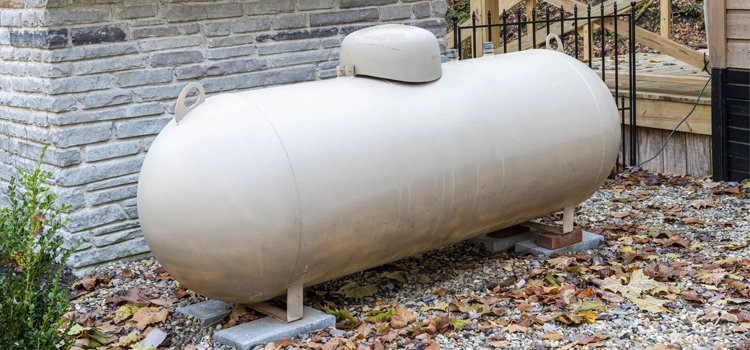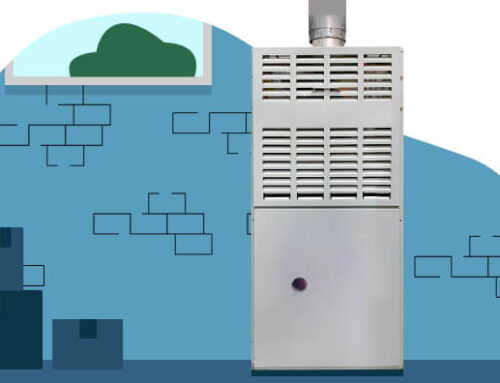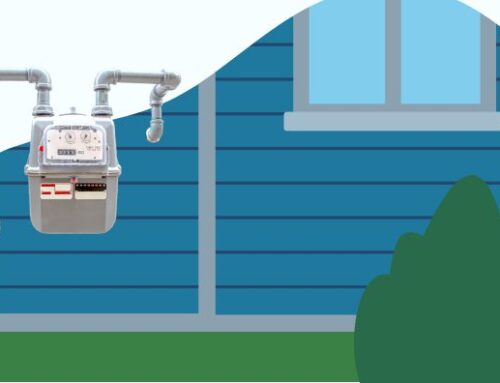Differences Between Propane and Natural Gas
by Tyler Castle
7.3 min read

Are you looking to power your home with a clean and efficient fuel source? Then you’ve likely come across two popular options: propane and natural gas. While both are widely used for heating, cooking, and transportation, there are key differences between the two that can impact your decision. We’ll dive into the details of propane and natural gas, from their cost to their uses and benefits so you can make the right decision for you and your home. Whether you’re considering switching to one of these energy sources or simply curious about the differences, we’ll provide you with everything you need to make an informed decision.
What is natural gas?
Natural gas is a source of fuel that is primarily composed of methane, with small amounts of other hydrocarbons such as ethane, propane, and butane. Odorless and colorless, natural gas occurs naturally in underground rock formations and can be extracted through drilling. Due to its high energy content and low carbon emissions compared to other fossil fuels, natural gas has become a popular choice for heating homes and sometimes generating electricity.
What is propane?
Propane is a colorless, odorless, and non-toxic gas in its natural state but is commonly compressed and stored as a liquid under pressure. Propane is widely used as a fuel source for household activities like heating homes, grilling, and heating your fireplace on chilly days. Although not too common, propane can be used for fuel to power buses, forklifts, and even some vehicles.
Is propane the same as natural gas? What’s the difference?
Even though both can be commonly used as energy sources, propane and natural gas are not the same. The main differences include:
- Composition: Natural gas is primarily methane, while propane is its own distinct hydrocarbon compound.
- Energy Content: Propane has a higher energy content per unit volume than natural gas. This means that even though it’s stored as a liquid, it provides more energy when burned compared to an equal volume of natural gas.
- Storage and Transportation: Propane is stored and transported in tanks under pressure as a liquid, whereas natural gas is delivered through pipelines.
Here are some other differences between natural gas and propane you should consider when choosing which energy source is right for you:
Environmental impact of propane and natural gas
Both propane and natural gas produce carbon dioxide (CO2) when burned. However, natural gas combustion generally produces fewer greenhouse gas emissions than other fossil fuels. Methane, the primary component of natural gas, is a potent greenhouse gas itself, and its leakage during extraction, production, and distribution can contribute to climate change if not properly managed. Even though when it burns, propane’s combustion emits less CO2 per unit of energy produced compared to many other fossil fuels.
Energy efficiency of propane and natural gas
When defining the energy efficiency of propane and natural gas, the exact answer can vary. Propane has a higher energy content per unit volume compared to natural gas and when it’s burned, that might not mean it’s better for your home than natural gas. In the same way, when it comes to the appliances in your home, the energy efficiency of propane or natural gas can vary. All factors, such as the specific appliance model, individual efficiency ratings, and frequency of use, play a role in determining the efficiency of your appliances and in deciding whether natural gas or propane is the right choice for overall efficiency.
Cost of propane and natural gas
When it comes to determining the cost difference between propane and natural gas, this answer can vary. It’s important to note that propane is often measured in gallons and natural gas in therms (or cubic feet). According to the E.I.A, as of December 2023, residential propane can cost $1.844 a gallon. While on the other side of the coin, as of December 2023, the E.I.A predicts that 46% of U.S. households that use natural gas for their heating will spend less this winter than previous winters. While the actual price of natural gas often fluctuates based on various factors like distance from where natural gas is produced or stored, state regulations, market fluctuations and even weather, but according to Energy.gov, the national U.S. average price for natural gas came in at $2.85/GGE.*
Household use and transportation of propane and natural gas
The transportation of natural gas and propane vary in different ways:
Natural Gas: is transmitted through pipelines. These pipelines span vast distances and transport the gas from production areas to distribution networks and end-users. Natural gas pipelines are a well-established infrastructure in many regions.
Propane: is typically transported in its liquid form under pressure via tanker trucks or railcars. These specialized vehicles are designed to safely transport propane from refineries or storage facilities to distribution centers, commercial users, and sometimes to residential customers.
When your energy source gets to your home, there are many ways you can use it within your abode. Here are the most common household items that use either natural gas or propane:
- Stoves/Ovens
- Heaters and Space Heaters
- Pool and Spa Heaters
- Fireplaces
- Clothes Dryers
- Grills
- Generators
Although propane and natural gas can power very similar things, it’s important to follow the recommended fuel type your appliance needs to function efficiently. If you deviate from your appliance’s preferred fuel source, you could risk safety hazards and risk wear and tear on your appliance. Be sure to read your appliance’s manual carefully to determine what fuel type you’ll need.
Safety of propane and natural gas
Both propane and natural gas are generally safe energy sources when used properly, but there are important safety considerations associated with their use to prevent accidents and ensure safe operation. Both natural gas and propane are odorless but are given a scent to detect gas leaks. Keep in mind that carbon monoxide detectors do not detect natural gas or propane leaks. You can test for a gas leak by conducting the soapy water test.
In the same way, be sure that your natural gas or propane appliances have adequate ventilation, as improper ventilation can lead to hazards in your home. When it comes to propane specifically, propane is stored in large tanks for household use. It’s important to keep these tanks upright in well-ventilated areas outdoors and keep them away from heat sources. Lastly, for both fuel sources, be sure to maintain your natural gas or propane appliances to keep them in good condition to prevent potential leaks or malfunctions. If you’re looking for more safety tips for natural gas in your home, be sure to check out our article for more information!
Other Considerations
If you’re still deciding if natural gas or propane is right for you, consider these additional factors in your choice:
- Availability and Access: Depending on where you live, propane and natural gas might not be limited to your area or not even available.
- Infrastructure and Installation: Keep in mind that picking one source over the other for your home might come with some needed installation. On average, a 250-gallon propane tank can cost between $400 to $1,000 to install while natural gas can be piped through most pipes in the home.
- Convenience and Flexibility: Propane, being stored in tanks, offers portability and can be used in remote locations. Natural gas, on the other hand, provides continuous supply through pipelines without the need for refills or storage.
- Appliance Compatibility: Ensure that the appliances you intend to use are compatible with the chosen fuel. Some appliances are designed for specific types of gas, while others might be convertible or adaptable.
- Regulations and Codes: Be aware of local regulations, codes, and safety standards regarding the installation, storage, and use of natural gas or propane. Compliance with these regulations is crucial for safety
Choosing between propane and natural gas for your household energy needs involves considering various crucial factors. Both propane and natural gas offer advantages and differences that impact their suitability for home use. We hope we helped with your decision!
Santanna Energy Services specializes in easy natural gas & electricity plans tailored to your home energy needs in the United States; providing services to Illinois, Indiana, Pennsylvania, Michigan, and Ohio. We provide a wide range of energy services and products to meet the needs of both residential and small business customers. Our mission is to provide innovative and cost-effective energy solutions that will help our customers achieve their energy goals. With over 35 years of experience, we are committed to creating life-long relationships by providing quality service to customers, communities, and employees.
*Price is as of October 1 through October 15, 2023
Tyler is an experienced energy professional, having worked for Santanna Energy Services, for the past four years. He is passionate about renewable energy and believes that diversifying the energy grid is the key to a sustainable future. Tyler is dedicated to supplying consumers with the best possible energy solutions and works diligently to make sure that Santanna can deliver the highest quality service.








